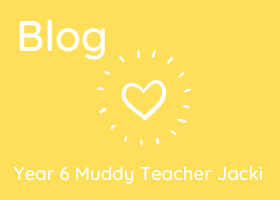It was a sunny Sunday morning during the Lockdown period in May. My five-year-old son was
engaging in some outdoor learning: water play in our garden.
I had recently given birth to my second son and was looking for ways to help my new duo bond and
get to know each other and what primary resources to use.
The baby and I joined my son and we all started playing in the water. It was then that the term
‘differentiation’ hit me in a muddy teacher kind of way.
Whilst teaching in the classroom, I generally differentiate the children’s work and learning methods
five or six ways to ensure I meet the needs of every child suitably.
Yet, here I was undertaking the same activity with a three-month old and a five-year old. Where was
the differentiation? It was still there. I had different expectations of my children. My baby was quite
happily engaging in sensory play and listening to his new family, whereas my son was playing ‘sink or
float’ and questioning the materials that the objects were made of.
The same happened a few days later with shaving foam. My baby dipped his feet in for a sensory
experience from a pack on the Muddy Puddle Teacher site and my son was practising his phonics and handwriting, the muddy way of course.
These experiences have made me look at outdoor learning and how the use of differentiation can
actually push children to reach their potential. Belief in a child is so important for their wellbeing and
their desire to learn.
If I had started water play with my five-year-old and expected him to just dip his hands in and grab toys, like my baby, he would think the activity was boring and possibly start to cause mayhem with
the water. Although the resources and area were the same, my differentiated belief in him
supported his learning through play and he was able to achieve a bit of scientific understanding.
Let all your pupils and children revel in an outdoor learning environment but don’t focus on traditional
differentiated activities, like in the classroom. Provide a free reign with choice and let them surprise
you. I know many Year 6 boys who choose to play with sticks (just like my Reception child). See what
they build or role-play; let them inspire you and only then should you start thinking about adding a
hint of direction to progress their learning outside the classroom.
The Muddy Puddle Teacher
The new way to do Outdoor Learning
Teacher Training | Teaching Resources | Primary Resources
Muddy Puddles CPD-accredited training
EYFS | KS1 | KS2
Visit the woodland trust to find new ways to support nature. Tap this link!


